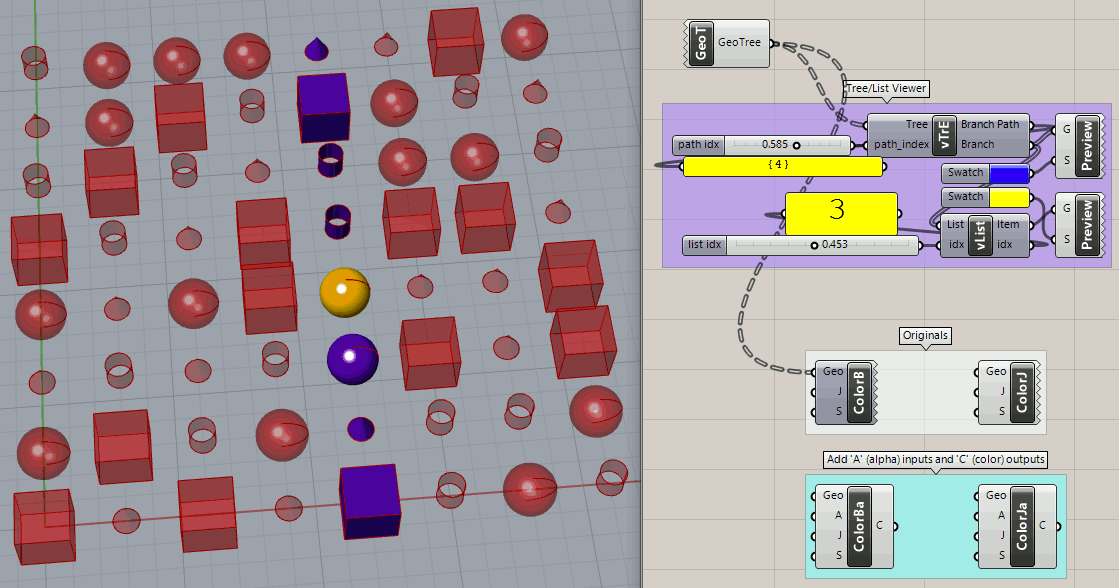In addition to temporary text panels and the Point List component, these are the tools I use to visualize and understand data trees of geometry:

data_tree_tools_2022_Nov3a.gh (46.6 KB)
Recently I added ‘A’ (alpha) inputs and ‘C’ (color) outputs to ColorB and ColorJ but I rarely need them or use them.
They tend to interfere with each other so I often use them one at a time.